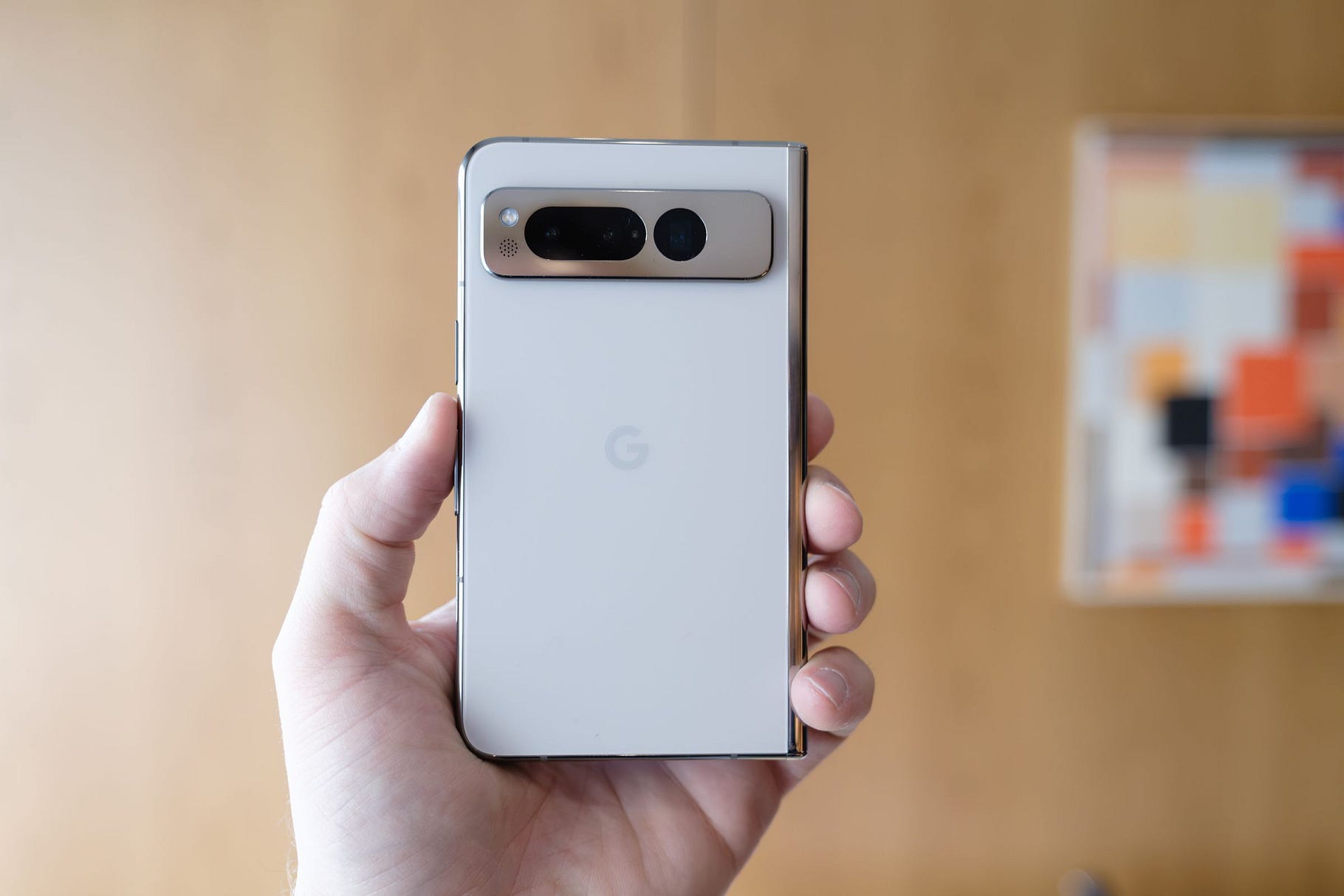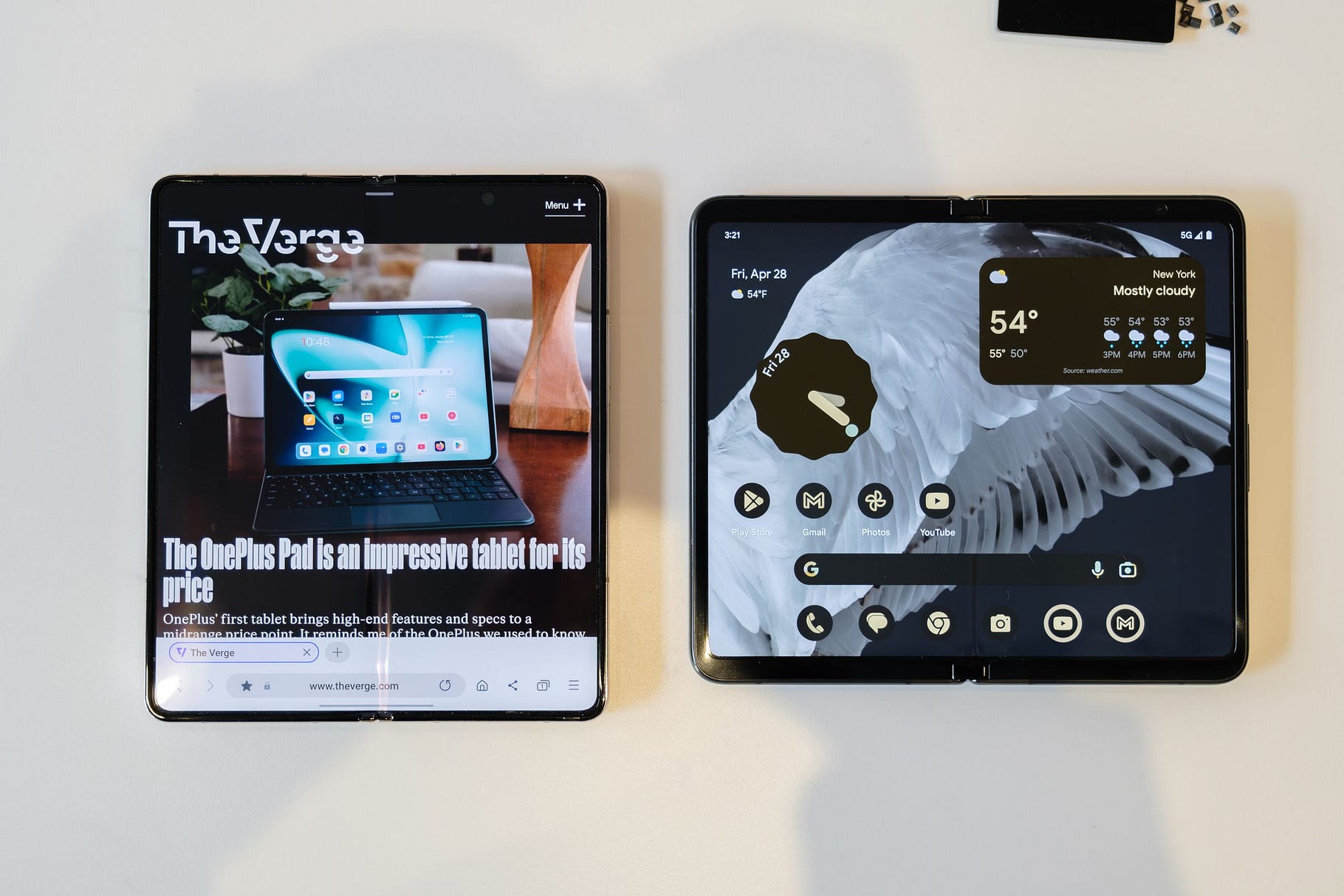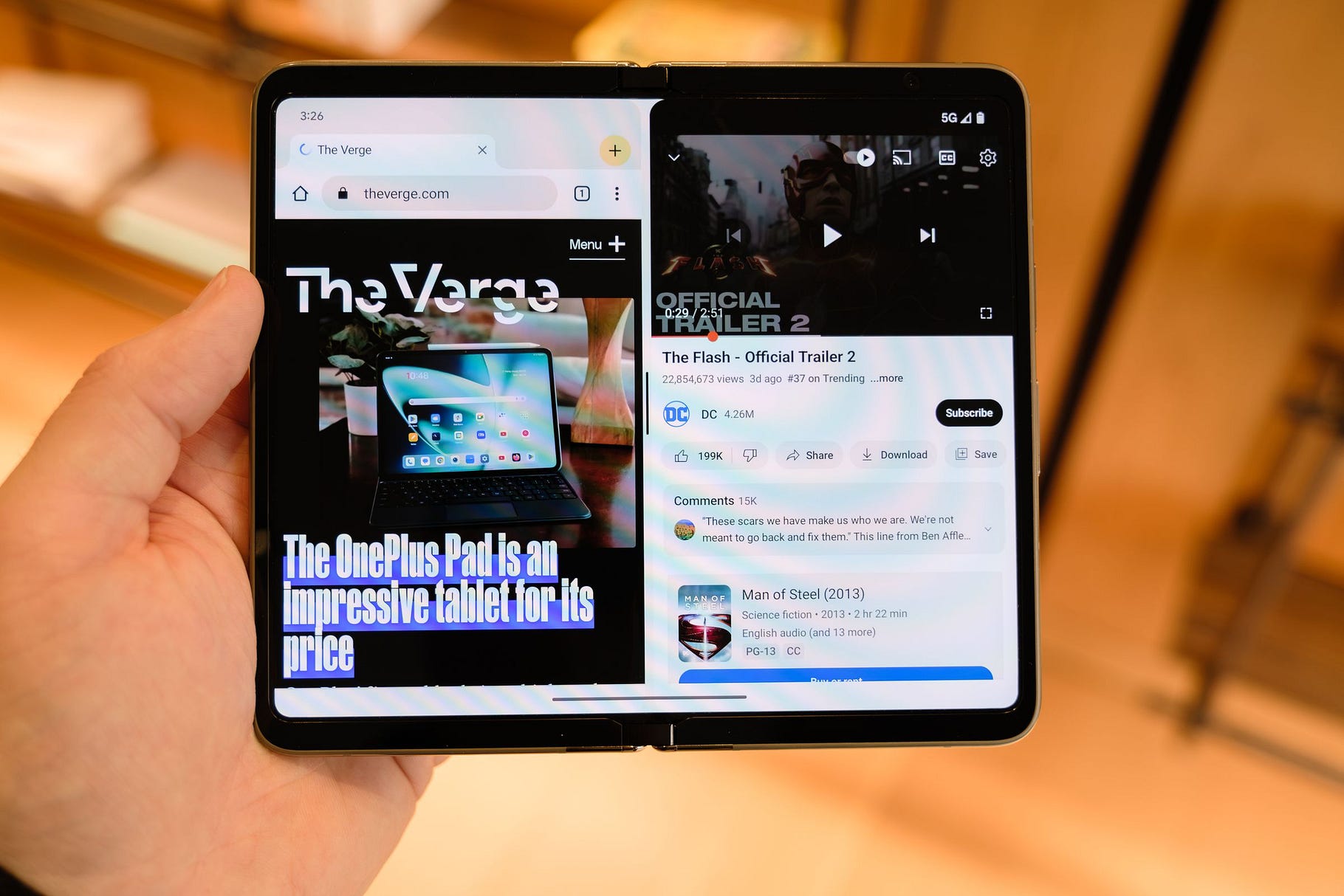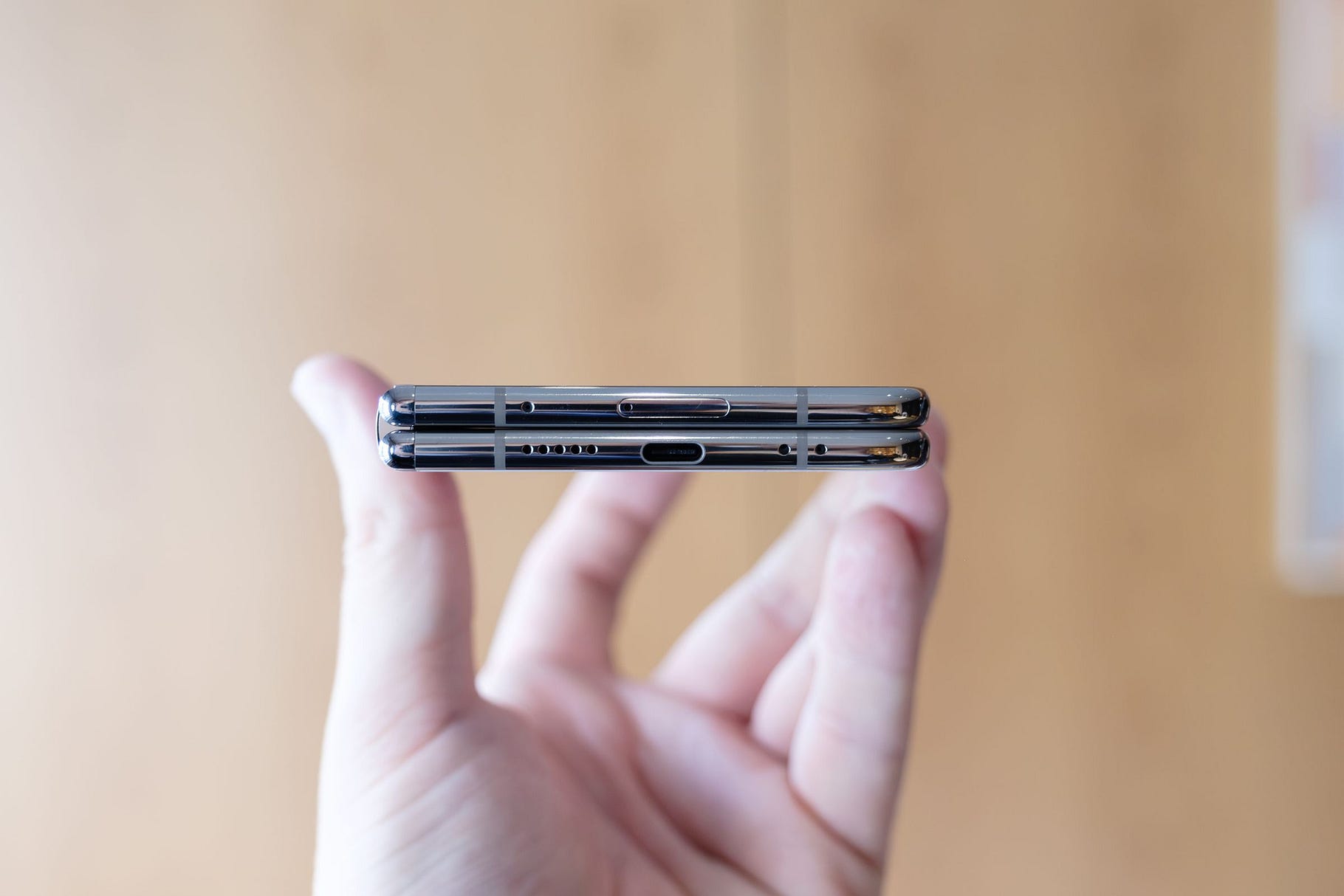The Health Strategist
institute for continuous health transformation
and digital health
Joaquim Cardoso MSc
Chief Research and Strategy Officer (CRSO)
May 10, 2023
ONE PAGE SUMMARY
Google has finnaly announced its entry into the folding phone market with the Pixel Fold, a $1,799 device set to rival Samsung’s Galaxy Z Fold 4.
- While this is Google’s first folding phone, it offers an impressive design and functionality.
- The hinge is sturdy yet manageable, the screens are high-quality, and the overall feel is premium.
- Google’s apps and software work well on the device, and future folding phone features for Android are likely to be optimized for the Pixel Fold.
The device transforms from a compact 5.8-inch phone to a spacious 7.6-inch tablet, providing flexibility and convenience.
- The Pixel Fold features OLED screens with high refresh rates, a powerful Tensor 2 processor, ample storage options, and a battery life of over 24 hours.
- It also boasts an array of cameras, including a 48-megapixel main camera.
In comparison to Samsung’s offering, the Pixel Fold has a more comfortable form factor, with screens that display apps and provide multitasking capabilities effectively.
- The hinge is flat when closed, and the device is thin, making it pocket-friendly.
Google has focused on delivering a familiar experience for Pixel owners, optimizing over 50 apps for the large inner display and promising five years of software and security updates.
- While the Pixel Fold addresses some criticisms of the Galaxy Z Fold 4, its high price and limited market availability may hinder its adoption by the general public.
However, Google’s entry into the folding phone market brings healthy competition and potential improvements to the overall user experience.
- The true test of the Pixel Fold’s success will come with time, as durability and third-party app support are evaluated through real-world usage by customers.
DEEP DIVE
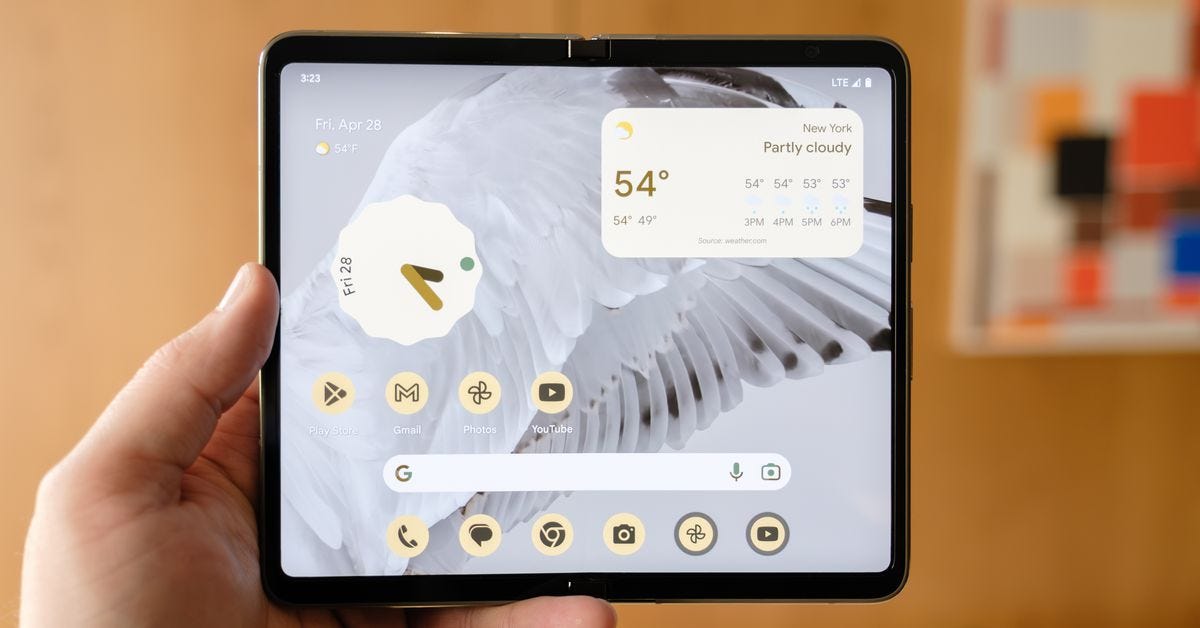
The Pixel Fold is Google’s $1,800 entry into folding phones
The Verge
By Dan Seifert
May 10, 2023
Following literal years of rumors and leaks, Google has finally announced the Pixel Fold, its first folding device. The $1,799 Fold is set to go head-to-head with Samsung’s Galaxy Z Fold 4 with preorders starting today, May 10th, and will be shipping to customers in June.
Though this is Google’s first attempt at a folding phone, there’s a lot to like here. As a general gadget or device that you hold and manipulate in your hands, the Pixel Fold is very nice — the hinge is stiff but not cumbersome, the screens look great, and it feels like the expensive object it is. Google’s apps and software appear to work well on it, and it’s likely that any future folding phone features built into Android will be done with the Pixel Fold front of mind.
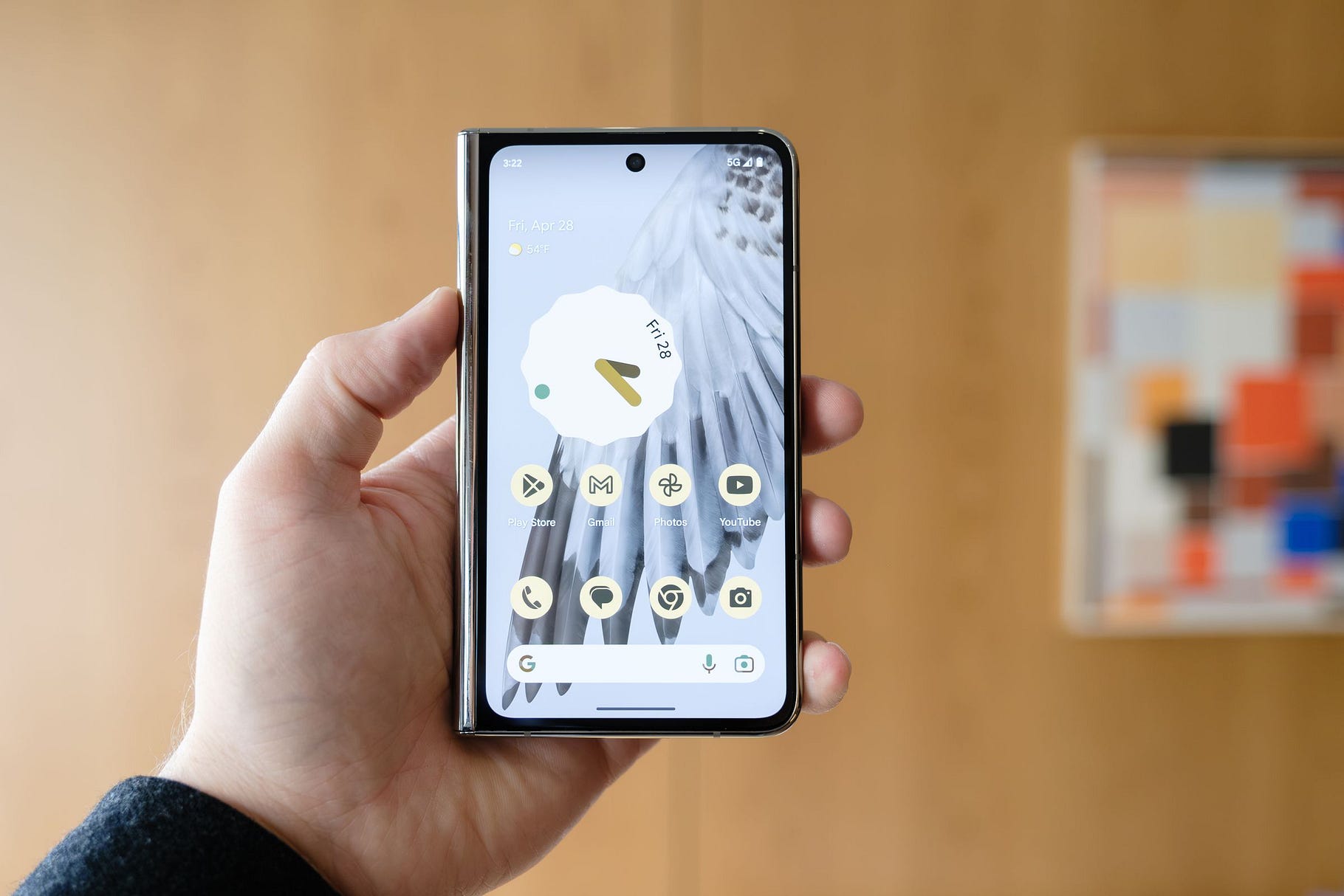
Google has seen most of its success with the Pixel line of phones on the low end and with their cameras, but this is an attempt in the complete opposite direction — an expensive, likely niche device that pushes forward what a mobile phone can be. It’s not the first entrant into this space, but Google is still early enough to have an outsize impact on this category, especially as it continues to pull the strings on Android as a platform.
Of the two styles of folding devices we’re familiar with, a compact flip that opens to a normal size phone or a normal size phone that opens into a small tablet, the Pixel Fold is the latter. It transforms from a compact, 5.8-inch phone into a 7.6-inch tablet thanks to its flexible screen and hinge, providing you with a spacious screen to run apps, watch video, play games, or whatever else you want to do with a mobile device.
As I’ve written before, this kind of device design offers a lot of flexibility. Being able to go from a phone that can be easily used in one hand to one that provides a giant screen for reading, using apps, or watching video is quite desirable, and once you’ve used a folding device of this nature, it’s easy to see that eventually, all phones will be like this. It can take the place of multiple devices in your life while still being as portable as the phone you already have. Also, it’s just cool — there’s a certain wow factor that a folding tablet provides that just doesn’t happen with a rectangular slab phone.
There aren’t any apparent compromises with the Pixel Fold’s displays
Both of the Pixel Fold’s screens are OLED panels with 120Hz refresh rates, and the inner screen is covered in ultrathin glass (plus a factory-installed and not-really-supposed-to-be-removed screen protector). The 1080 x 2092 pixel outside screen can hit up to 1550 nits of brightness, while the 2208 x 1840 pixel inner display hits up to 1450 nits, which means both should be quite usable outdoors. It’s nice that there isn’t a real compromise with either display compared to standard slab smartphones, though it’s fair to expect that on a device that costs nearly $2,000.
The Pixel Fold is also premium on the inside: it has the same Tensor 2 processor found in the Pixel 7 and 7 Pro (as well as the Pixel 7A and Pixel Tablet, also announced today) paired with 12GB of RAM. You can get either 256 or 512GB of storage, but there is no way to expand it after the fact.
Google is claiming “beyond 24 hours” of battery life from the Pixel Fold’s roughly 4,800mAh battery system, which is split between two cells, one in each half.
The Pixel Fold can fast charge at a rate of up to 30W or can be wirelessly charged on a standard Qi charger. Sadly, neither charger is included with the device.
There are five total cameras on the Pixel Fold. There are two 8.3-megapixel cameras — one on the outside for selfies and another above the inner display for video calls — and then three cameras around back: a 48-megapixel optically-stabilized main camera, a 10.8-megapixel ultrawide, and a 10.8-megapixel 5x telephoto. The camera’s features and capabilities are similar to what’s available on the Pixel 7 Pro, but these are different sensors — Google wasn’t able to fit the larger sensors of the 7 Pro in the Fold’s slim frame.
It’s impossible to talk about the Pixel Fold without comparing it to Samsung’s Z Fold 4. The two devices are, by and large, very similar, but Google made some different choices from Samsung on a variety of fronts. The most obvious one is the aspect ratios on both screens: the outside screen is shorter and wider than the Z Fold 4’s weirdly tall and narrow screen. That makes the Pixel Fold feel and behave more like a standard smartphone when it’s closed — it’s more comfortable to type on, and apps don’t get weirdly stretched or compressed.
Similarly, the inner display on the Pixel Fold has a 6:5 landscape aspect ratio versus the more portrait-oriented Z Fold 4. Despite both having “7.6-inch” screens on their spec sheets, this aspect ratio gives the Pixel Fold a much larger screen on the inside than the Samsung. Much like the outer display, apps tend to display better on the Pixel Fold’s inner screen, too, especially when using the split-screen multitasking to run two apps at the same time.
The Pixel Fold also features a hinge that can fold completely flat — there’s no gap between the screens when it’s closed like Samsung’s folding phones. There is a visible crease when the Pixel Fold is opened, but it’s not something that’s likely to impede usability — in my brief demo time with the device ahead of today’s announcement, I only saw it when I specifically looked for it.
In addition to folding completely flat, the Pixel Fold is thin — each half is “about 2/3s the thickness” of a Pixel 7 Pro, according to the Google executives that demoed the device to me. In real terms, that’s just under six millimeters thick, noticeably thinner than the Galaxy Z Fold. When closed, the Pixel Fold is about 12mm, which is more than the typical phone today, but not nearly too thick to fit in most pockets or feel unwieldy. In comparison, a closed Z Fold 4 is almost 16mm thick.
The hinge is made of stainless steel, and Google says it’s rated for up to 200,000 opens and closes. It can hold its position anywhere you leave it, so you can turn the Pixel Fold into a mini laptop if you so desire (or, more likely, just watch video on it without having to hold it). The Pixel Fold has an IPX8 weather resistance rating, which means it can withstand exposure to water but not dust. You aren’t going to want to take this to the beach.
Another area where Google differs from Samsung is unsurprisingly in software and raw number of features. The Pixel Fold does not support stylus input whatsoever, nor does it support output to an external display, both of which are available with the Galaxy Fold 4. The Pixel Fold’s multitasking options are limited to two side-by-side apps; Samsung will let you run three apps on the screen at a time and then throw another floating window on top of that for the most possible productivity chaos. You can even get a whole desktop environment when the Galaxy Fold is connected to an external screen.
What Google provides instead is a focused and familiar experience to existing Pixel owners, with support for Google’s latest Material Design aesthetic. The company says it has optimized over 50 of its apps to take advantage of the Pixel Fold’s large inner display, and you can do tricks like start using an app on the outer display and then open directly into that app when you open the phone. The Pixel Fold is launching with Android 13; when it gets updated to Android 14 later this year, it will get more features utilizing its unique hardware. Google is promising five years of software and security updates for it.
As an early adopter of folding phones, I’m excited that there’s finally some competition for Samsung here in the US. The Pixel Fold addresses a lot of my complaints with the Galaxy Z Fold’s odd shape, and I’m hopeful that its camera system is more competent than the Samsung’s.
But I’m not yet convinced that the Pixel Fold will change the status of folding phones for the general public. It’s still prohibitively expensive for many, and though Google is offering preorder promotions like strong trade-in values and freebies, I don’t know how much effort it will put into getting the Pixel Fold into people’s hands. Samsung has nearly constant promotions on the similarly priced Z Fold 4, and even then, it’s still a niche device that most people have never used.
Google’s relative tardiness to launching the Pixel Fold gives it an advantage in that it can see where Samsung has made missteps and hopefully not make the same mistakes itself. Still, we don’t really know how things like durability and third-party app support will look like until the Pixel Fold is in the hands of real customers with months of usage on it.
Originally published at https://www.theverge.com on May 10, 2023.
